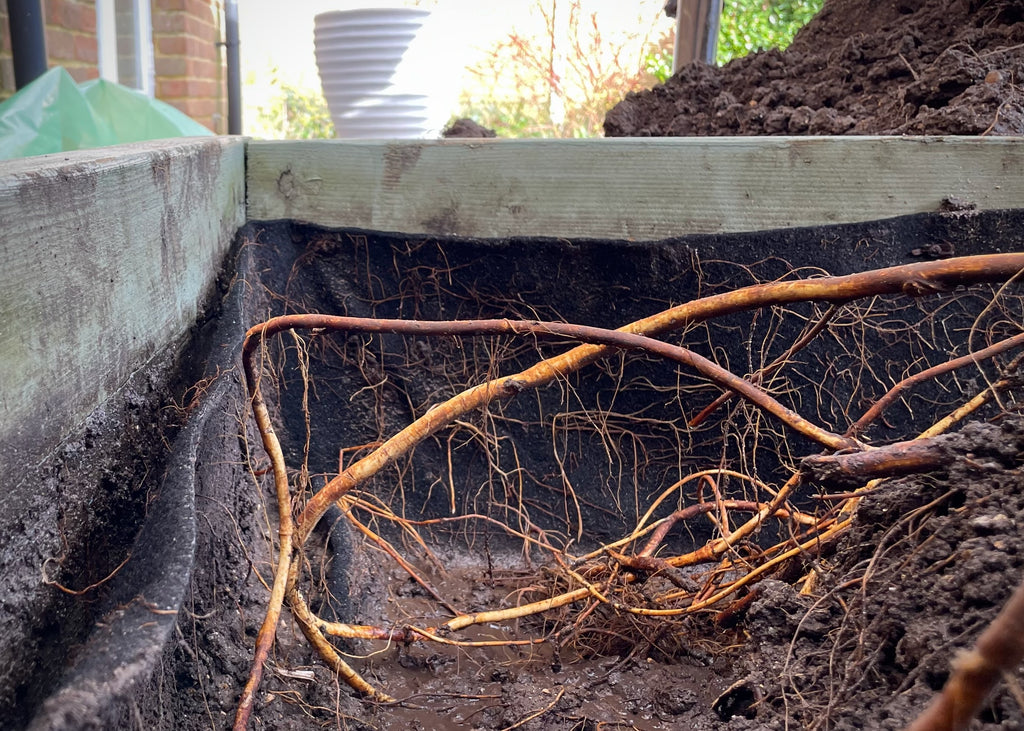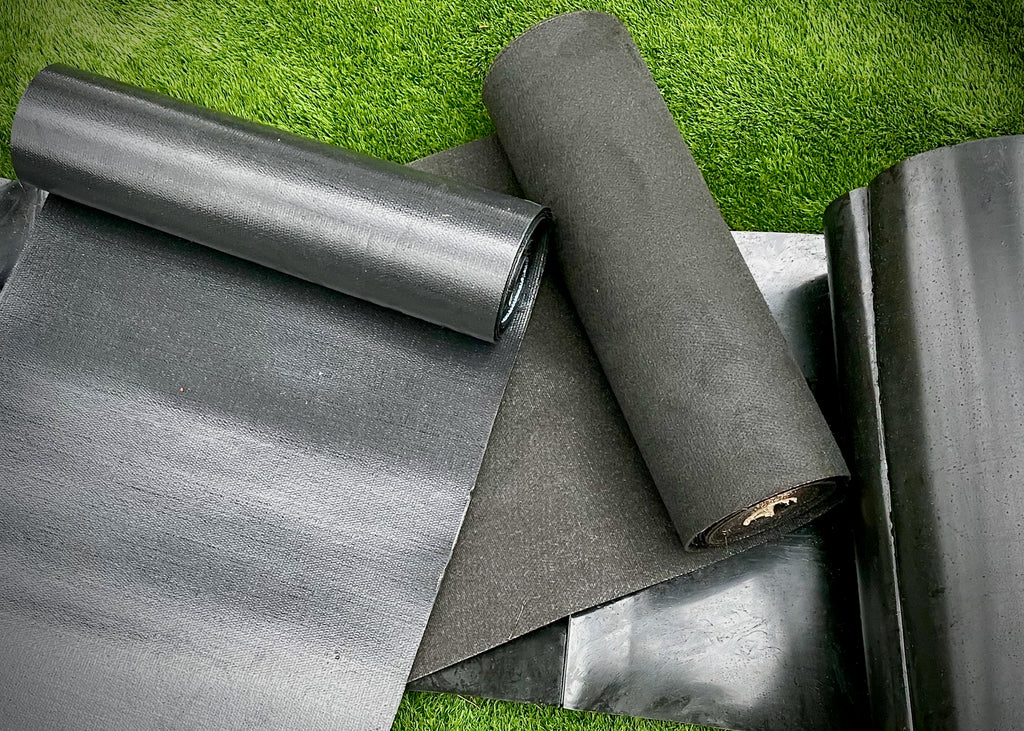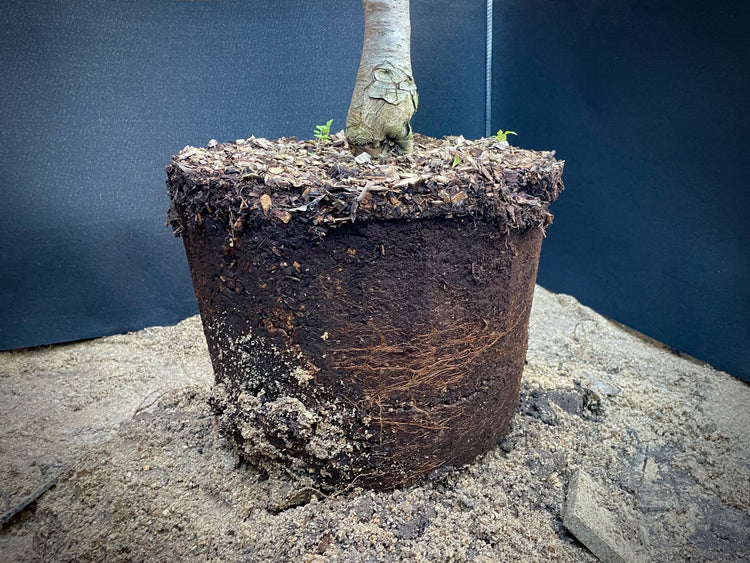Tree root barriers are designed to contain tree roots, or direct them downward to prevent damage to nearby structures. But do they work, and what is the cost of tree root barrier installation? Root barriers are made from durable materials, like high-density polythene, that can last many years. However, their effectiveness is dependent on selection of the right barrier and effective installation. Our guide to tree root barrier installation aims to help you understand how to competently install root barriers for trees, and what is required for success. If, after reading, you determine it's not a task you can manage, we also provide advice on finding tree root barrier installation services nearby.
Do tree root barriers work?
Tree root barriers do work, but it is important to ensure selection of the correct type, and that it is used appropriately. Careful installation of a barrier suitable for the job is essential to ensure tree root barrier installation is cost effective and achieves the desired result. For this reason, Root Barrier Store offers free technical phone support to help people select the best tree root barrier for their specific project. The primary project considerations are the required root barrier function and the site constraints.
Root Barrier Function:
- Block roots - barriers must extend past roots and deeper than the tree roots are predicted to grow.
- Deflect roots - barriers direct tree roots away from surfacing and their foundation buildups.
- Contain roots – barriers are used to encapsulate horizontal and vertical tree root growth.

Site Constraints:
- Tree location/access route: location and access to the trees related to the job. But also, those tress on-site with preservation orders, any buried structures and below-ground utilities.
- Length of root barrier: what's required for the project (minimising joins).
- Depth of root barrier: an appropraite depth that accounts for the species roots.
- Prohibited excavation zones: staying far enough away from trees. Streetworks, the cross-sector trade association representing gas, electricity, water, sewage and telecommunications utility companies has created: Guidelines for the Planning, Installation and Maintenance of Utility Apparatus in Proximity to Trees
Before starting, you must know what you want from your root barrier product. It is crucial in determining a specific tree root barrier that will be effective for your task.
Tree root barrier uses
As beneficial as trees are, their roots can be the 'villain of the piece'. It is likely you are choosing to use a root barrier to resolve or prevent one of the following scenarios from occurring:
- Indirect damage: tree roots will shrink clay soils, causing indirect damage, such as building subsidence.
- Direct damage (pressure from root growth): often seen in paving or garden walls where roots exert pressure as they grow, distorting walls and surfaces.
- Interference with utilities: gas, water, electricity, optics, and other utility infrastructures can be exploited by tree roots as they seek to live off the moisture found in these locations.
Knowing why tree root barriers are being considered and whether they will be used with newly planted or existing trees will impact on the choice and type of root barriers used.
Selecting which root barrier to use for trees in the UK
Continued warmer, wetter winters in the UK could exacerbate the sometimes detrimental effect tree roots. Root barriers are now increasingly being specified as a preventative measure for issues that could otherwise arise later. Whilst now much more commonly used for planting, particularly tree planting in urban areas, knowing which root barrier to use for trees in the UK is often not understood.

We've tried to make things a little easier with our Tree Root Barrier Selector Chart. Each of the products we've chosen for Root Barrier Store serves a function or multiple functions. We have products that can contain, deflect, or block tree roots, illustrated here to aid you selection for a specific use case:
|
New tree planting - root barrier selector chart |
||||||
|
Root Barrier Application |
Function |
CuTex (permeable root barrier) |
FlexiRoot (Non-Permeable root barrier) |
ReRoot (with ribs to prevent root spiralling) |
Tree Rings (Permeable) to fit a tree pit |
Tree Rings (non-permeable) to fit a tree pit |
|
Indirect damage -building subsidence* |
Block |
|
NA |
NA |
NA |
NA |
|
Contain |
|
|
NA |
NA |
NA |
|
|
Direct damage - roots exerting pressure on walls surface and other structures |
Block |
|
|
NA |
NA |
NA |
|
Contain |
|
|
NA |
NA |
NA |
|
|
Deflect |
|
|
|
|
|
|
|
Interference with utilities |
Block |
|
|
NA |
NA |
NA |
|
Contain |
|
|
NA |
NA |
NA |
|
|
Deflect |
|
|
|
|
|
|
The range of uses for root barrier related to trees is more diverse than with most other plant species. That's largely because it's useful for both planting and containment of existing plants.
|
Existing tree - root barrier selector chart |
||||
|
Root Barrier Application |
Function |
CuTex (permeable root barrier) |
FlexiRoot (Non-Permeable root barrier) |
ReRoot (with ribs to prevent root spiralling) |
|
Indirect damage - building subsidence* |
Block |
|
NA |
NA |
|
Direct damage - roots exerting pressure on walls surface and other structures |
Block |
|
|
NA |
|
Deflect |
|
|
NA |
|
|
Interference with utilities |
Block |
|
|
|
|
Deflect |
|
|
|
|
|
*Based on Arboricultural Advisory Note 4 (APN4) 1997 |
||||

How to install root barriers for trees
The following 24-step guide has been created to help you learn how to install root barrier for trees, avoiding any costly mistakes. Step-by-step instructions for installing a root barrier to prevent tree root encroachment, or for the protection of foundations from existing trees.
- Determine the length of barrier required. If you are unsure about this, seek arboricultural advice.
- Make sure that the route for the barrier is not going to adversely impact on other trees, particularly trees with preservation orders. If you are unsure about this, seek arboricultural advice.
- Complete a trial hole to determine the depth of tree roots. This will also determine the depth of root barrier required. You may again wish to seek arboricultural advice for this task.
- Consider whether tree root analysis (using a laboratory) is required to check which trees species the roots found belong to. Doing this, will allow for better determination of root depth and tree root barrier length and depth.
- Use our Tree Root Barrier Selector Chart to identify the best root barrier for the project.
- For root barriers that will deflect tree roots you may, or may not, need to use mechanical plant machinery. However, excavators will make light work of what could be a quite laborious job.
- Ensure you have good enough access for equipment and machinery. If a trench has to be dug more than 1 metre deep, you will most likely need to use a contractor who will provide mechanical excavators.
- You will need a bigger excavator the deeper you dig. Use this guide to determine if excavator access for your tree root barrier installation job is practical/possible:
- Trench up to 1m deep: an access width of 750-1000mm will be required.
- Trench 1-2m deep: an access width of 1000-1500mm will be required.
- Trench +2m deep: an access width of 2000mm or more will be required.
- Check for utilities and obstructions. You should get relevant information from utility providers before digging, LinesearchbeforeUdig is a useful website resource to use.
- Look for overhead cable runs that may restrict the use of excavators.
- Assess the soil type, as this will determine if trench protection will be needed to prevent trench collapse. This is both a danger factor and could inhibit root barrier installation.
- Once you are sure that it is possible to install root barrier safely and to the correct depths, it's time to order your root barrier. Remember, you will need a little more that the estimated length without being wasteful.
- Ensure your contractor is prepared, and that they are aware of any safety issues. This is both your responsibility and theirs.
- It can help with deep barrier installation to replace the excavated soils with an angular stone as this is less likely sink once installed. If this is to happen, the safe removal of soils and importation of new material using appropriate machinery must be organised.
- As you excavate the trench, check for sharp objects, including stones and any objects likely to puncture the barrier. The trench wall, and any material placed close to a flexible root barrier, must be free from any such object capable of puncturing. If necessary, a protective fleece can be used to provide additional protection.
- Additional protection: where there is concern over possible punctures, a suitable protective geomembrane fleece should be used (on both sides of the trench) if appropriate.
- For a simple installation, lay the root barrier out parallel to the trench. Before offering the root barrier up to the trench it is wise to ensure that any loose soil is moved away from the trench as this may hinder installation.
- Gently lower the barrier into the trench. Look for any kinks or twists in the barrier pulling them out so the barrier is straight and sits on the tree side of the trench.
- For more complex installation, it is best to obtain specialist advice.
- Make sure that the top of the barrier sits more than 100mm above ground.
- Where jointing is required, heat welding is recommended for the best results. Alternatively, the root barrier can be tape jointed using a specialist root barrier tape or glued using specialist root barrier adhesive.

- Once ready to backfill, ensure that the barrier is at the correct depth and that it extends fully along the trench. Remember that as the trench is backfilled the barrier will be pulled downward. If the barrier extends around sharp corners, there may be a need for some slack in the barrier to allow for movement.
- On completion you can trim the top of the barrier so that you have an even protrusion above ground. The minimum should remain.
- Finally, it can be desirable to secure the barrier to a fence or wall. We suggest obtaining further advice before doing this.
N.B. The installation of root barrier to protect utilities, and for new tree planting, follow different processes.
What is the cost of tree root barrier installation?
The following pricing examples have been provided as a gauge for the cost of root barrier installation. However, project specific tree root barrier installation costs, find a contractor (see below) and obtain a quote. The following should provide a helpful starting point:
- A basic root barrier installed 0.6m deep (maximum) using a specialist soil saw costs £120/metre with a minimum charge of £,1200 +VAT (2024 price)
- A root barrier 0.6-1m deep using a micro excavator will cost £180/metre with a minimum charge of £1,800 +VAT (2024 price)
- A root barrier 1-2m deep using a mini excavator will cost £220/metre with a minimum charge of £2,200 +VAT (2024)
Deeper excavations will cost more, with a typical excavation to a 2-3 metre depth costing from £6,000 for 10-15 metres of trenching. Sorting out the logistics and the reinstatement costs can add significant cost layers to root barrier installation. All factors should be accounted for when costing.
How do I find a tree root barrier installation service near me?
The information in this guide should make you more equipped to understand what the contractor will be required to do, and the associated tree root barrier installation costs.
When looking for a tree root barrier installation company, of course, local recommendations are always a good start. Whether taking a recommendation or conducting an online search for a local company, it's good to look at track record and experience. There are some accreditations, such as CHAS or SafeContractor, to look out for that will help you pinpoint a reputable installer.
And, don't forget you can always ask us. Our parent organisation, PBA solutions, has 20 years experience in the field. PBA has written and provided installation guidance notes upon request from root barrier manufacturers. If you fall outside of our region, we can advise from our network of contacts.

